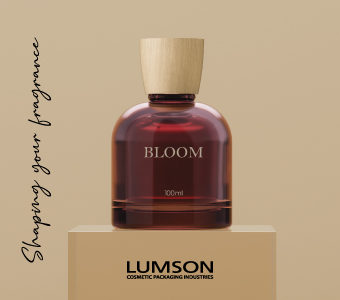
In the maze of emotions
Perfumes companies have kept exploring the emotional dimension of perfumes. dsm-firmenich introduced Mind Nose + Matter, an exclusive co-creation platform to examine the future of fragrances. The tool feeds on consumer data, social and cultural trends, and the creativity of the company’s perfumers. Beyond the fragrance, a major factor in the perfume choice, dsm-firmenich wanted to highlight the impact of fragrances on our emotions through about 20 olfactory trails. “The Mind Nose + Matter 2024 experience highlights the role perfumes can play in helping us through different life moments”, explains Justin Welch, Global Marketing Director Fine Fragrance.
In addition to its Science and Wellness programme, IFF presented a Tree of Emotion, a synesthetic experience mingling odours and colours, as well as the Scent, Sound and Visual zone, a cabin designed in partnership with Ircam Amplify for an immersive experience, with energising effects in the morning and relaxing ones in the afternoon.

Revisiting naturalness with modern processes
This year again, natural ingredients were in the spotlight, mainly in the form of classic perfume materials to which a new origin, more responsible sourcing, or a new extraction method bring a new lustre.
For example, the LMR Naturals by IFF range was enriched with three Mexican citrus fruits “traceable to the source”, three essences – pink grapefruit, white grapefruit, and lime – for a rendering very close to the fruit in its natural state. It was completed by a For Life-certified blackcurrant bud sourced and produced in France, and extracted using supercritical CO2. The essential oil is less sulphurous than usual, and more fruity.
Mane took the show as an opportunity to unveil a few new natural ingredients, including a Pure Jungle Essence of Siam benzoin resulting from a partnership in Vietnam. This benzoin absolute extracted using supercritical CO2 is much vanilla-flavoured – an advantage given the rising price of the pod. The perfume company also offers an E-Pure Jungle Essence of Sambac jasmine derived from enfleurage, an old technique now involving vegetable waxes. This process reveals a fragrance faithful to the flower’s natural rendering: bright, fruity, less animal-like. Finally, because natural ingredients are also derived from biochemistry, we can now make way for antillone, a natural molecule offering facets of green pear and pineapple, with a pulpy effect. A 100% natural, renewable, biodegradable Mane captive molecule.
As for citrus ingredients, Italian company Capua showcased a bergamot flower and a tangerine flower, two infusions of the flower diluted in the fruit’s essential oil, discoloured, and furocoumarin-free.
Also for a fresh look at natural ingredients, seven suppliers were brought together by the Resperfuma agency as part of the Naturals Corner. Agroforex, Enio Bonchev, Jacarandas, Jasmine CE.Pvt.Ltd, Nelixia, SCA3P, and Verger highlighted their efforts to create and maintain responsible supply chains offering impeccable quality and attractive income prospects for producers, while preserving ecosystems.

New natural ingredients
While Symrise unveiled some beautiful extracts produced by Maison Lautier 1795, the perfume company also introduced a brand new addition to the perfumer’s palette: a “super natural” extract (extraction, and then re-extraction) of yellow bolete (Boletus auripes), with earthy, umami, and salty facets.
New ingredients also included Mane’s absolute of Rosa Lani grown in Moldavia, a hybrid of Damascena, Alba and Galica roses, with a petal-like, fruity, slightly syrupy effect. As for Cosmo International Fragrances, they introduced lemongrass leaf petitgrain essential oil. Petitgrain essence is not new, but it usually comes from sour orange tree and offers bitter, green and earthy notes. This essential oil has lively, tangy, sparkling tones.
Synarome, the ingredients branch of the Sozio group, presented a series of high-impact molecules to be used in small quantities (less than 1%), including Benzoin Laos Matured Resinoid, a benzoin matured to sharply increase its vanillin content, and Anisyl Nitrile, an alternative to benzaldehyde or coumarin for almond, lilac, mimosa notes, and even more.
Finally, Australian Native Products unveiled a lemon myrtle essential oil, an ingredient with herbaceous, lemony effects reminiscent of verbena which can offer an alternative to certain natural ingredients banned by regulations.

Captive molecules now available on the market
Captive molecules result from research and are exclusive to perfume companies, but after a while, they can be made available to other companies or perfumers.
As an example, Nympheal was released this year by Givaudan: this molecule with the effects of a fresh, opulent lily of the valley offers volume, a creamy texture, and excellent diffusion to the formulas. In particular, it makes it possible to chisel a lily of the valley chord without using Lyral, a molecule now banned by IFRA.
Other molecules now available include Algix 100% by Synarome, for aqueous notes, as well as Ylanganate, a captive molecule developed by IFF in 2010. Its floral, sunny tone gives white flowers radiance and power, and also helps bypass certain regulatory constraints.
For its part, Symrise used its Magnolan, a molecule with zesty, floral, fruity tones, to extract Neomagnolan, an isomer with a more modern, airy effect, now available to other perfumers or perfume companies.
The venue and dates for WPC 2026 are not yet known, but should be announced shortly: stay tuned!












































